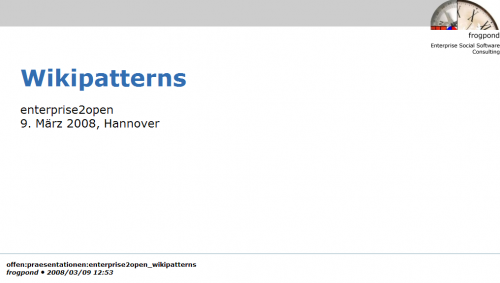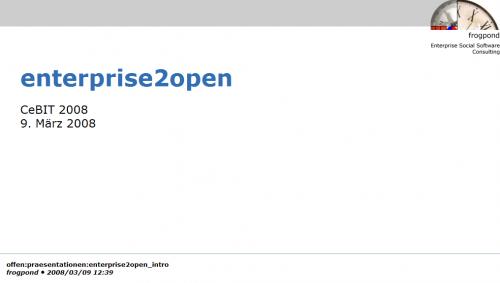… on architecting participation (“Structural Holes and Space between the Tools”), some notes (Jenny, you know I’ve got clumsy fingers), her blog is here:
– people is the thing that doesn’t change – it depends on your structures, on the ways work is organized, the choreography, the inner workings etc.
– we need to think simultaneously about technologies *and* organizations, these are intertwined, no thing like Ceteris Paribus here (it’s ans AND BOTH world)
– Jenny had some concerns with the Davenport/McAfee debate, like that it omits discussion about value creation principles – again people and the structures they’re working in
Some remarks on Enterprise 2.0 SLATES, then she’s looking at Organizational Network Analysis, referring to Valdis Krebs, Rob Cross, Patti Anklam and Nancy White (crazy, I follow these people too on a regular basis). Mentions the Dunbar number, Metcalfe’s law etc.
SNA reveals informal networks, which thrive in parallel to the formal, visible structure. Yes, this allows for completely different perspectives on the social world inside organizations, on influence groups, leverage points and patterns of interaction.
Jenny offers some more insights on the importance of choosing metrics right, like when measuring only the activity of wiki edits doesn’t really provide insight – you have to look behind the history of these edits, the changing alliances in the argument, etc.
To wrap it up, this is messy, complex stuff, the most interesting things are happening in the spaces in between. The notion of network thinking is a demanding discipline, perhaps one reason that able organizational development consultants are rare in this space, yet enhancing or leveraging social capital in the enterprise is a hugely important task.
This has been one of my highlights for the conference, sadly I have been bugged in between by annoying internet connection problems, so this writeup is rather sparse. Anyway, I will exchange some words with Jenny later on, there’s a get-together scheduled at the end of the Enterprise 2.0 Summit, some beers are definitely doomed …



